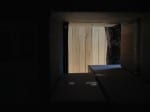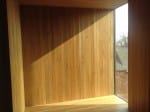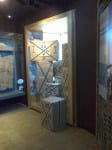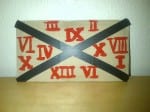Monday 28th January
Explorations and Revelations
Our intention for this week was to generate a range of ideas and to discuss how we could approach and make use of the gallery. Our very first task was to really consider what space is and how it is used. We were asked to experience the gallery as any member of the public would. We looked at the way we are encouraged to explore the gallery in a particular way despite feeling as though we are exploring the gallery uninfluenced and by our own means of interest.
We were looking at two galleries; The Collection and The Usher Gallery. As we had the option to choose which gallery we would like to perform in, we wanted to look at the one which we felt had the most potential and we could draw the most from. So we proceeded to spend this first week comparing the two and exploring which space we would like to utilize. With The Collection we noticed there was more of a social space as well as the architectural space. These different aspects added extra dimensions in comparison to The Usher Gallery, which I felt was more traditional and conformed, The Collection allowed for contemporary and more interpretational forms of questionable art. From this we began looking at the transformation between past and present, we wanted to look at how the two galleries ‘bounced’ off each other and while The Usher Gallery mainly had traditional, timeless pieces of art, The Collection was more modern.
One of the first things we wanted to look at was the public’s perception and attitude towards the space around them and whether they embraced it for its social, architectural or visual aspect. We decided to sit in the café gallery and observe and record conversations between the public. We did this so we were able to see what the focus of conversation is and how much influence the gallery has on being topic of conversation.
‘She just said if you need any more help yourself but she was too polite to help herself. She was always coughing her guts off.’
We merged down the surrounding conversations to make one long conversation, almost presented in stream of consciousness. The conversations were about food and people and nothing in relation to the gallery itself. This just emphasized to us the different values a gallery and its space can hold to different members of the public. Where some people have come to genuinely see the art work, others have used the gallery as a meeting point.
Word Count: 422
Thursday 31st January
The Man Who Married A Mountain
We quite quickly decided we wanted to look at this idea of revelations and as I said previously, drawing more focus to spaces in the gallery which aren’t necessarily the most popular or even exciting. We noticed something outside was a piece of art from The Usher Gallery; a giant gold ring on a tree. We asked the people who worked at the gallery, what the idea behind this was and found out that this was inspired by a story called ‘The Man Who Married A Mountain’ by Rosemary Bailey. This is about being in touch with nature and the artist who placed this ring on the tree was making a statement of how close he felt with nature and its surroundings. What we found relevant to our exploration of revelations was the fact that, it took us so long to notice this ring. We found the emphasis on the ring was drawn only depending on the season we were in. For example the ring would be most exposed in summer and quite concealed in winter. We found it interesting that something such as the seasons determined the revelation of the art work outside of the gallery. To the point where it’s as if the artist has handed over his art for nature to ‘control’.
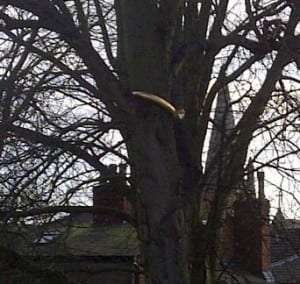
Word Count: 215
Monday 4th February
Sound Wall
In The Usher Gallery, there was a particular piece of art which we felt drawn to. It was a sculpture of a dead man on the floor who had been washed up among the shores. I really found this piece intriguing because in a sense, it was such a simple yet effective idea. This man had been so intricately sculpted that everyone’s reaction to it were that of unease or utter fascination. I experienced both, being quite apprehensive at first but then I really began to study it and get closer. From this experience this then helped us to move onto exploring ways of attaining the public’s attention and seeing how we can gain their attention.
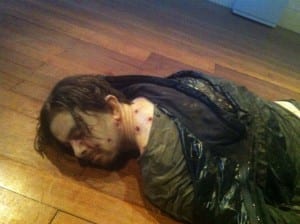
We moved to ‘The Collection’ and proceeded to perform and experiment in response to the visual and audio elements of the gallery, there was a sound wall which we found quite mesmerising and two of us placed ourselves on the balcony which was overlooking the sound wall and the other two members of the group almost mimicked the model of the deceased guy from the Usher Gallery. The intention of this was to see what we thought we could get from the public and how easily manipulated they could be considering they had come to the gallery not to see us, but to see the art, which we were essentially trying to recreate. One other member of the group and I attempted to reciprocate the sounds which were coming from this sound wall which was a slightly fragmented humming echo, in the hope to make the public feel slightly uneasy as our presence wasn’t visibly noticeable but we ensured to be slightly louder than the sound wall itself. The repetition of this noise helped our understanding of how the public respond to their surroundings. There was a strong contrast between the two on the balcony and the two on the floor due to the fact the two members on the floor could be seen and not heard, whereas as the two on the balcony could be heard and not seen. This created a presence of the unknown, resulting in the public feeling uneasy towards the other member of the group and me on the balcony as they were unsure of what to think what was up behind the sound wall. One member of the group who was on the floor was sitting in the centre of the balcony and the sound wall with her head down and not moving, whilst the other member on the floor had her legs hanging out the bench and her arms and head were hanging over the top, also not moving. Although this was quite an eerie image to portray, it was important for us to experiment with this in order to start gaining an understanding of how we as a group, could utilise the space in the gallery.
Word Count: 480
Tuesday 12th February
Practical exploration and Experimentation
As a follow up of us starting to delve into our exploration of space and our experimentation of what we can do with it, we started to carry out a range of activities or tasks which we felt would help us continue with this process. As a group we purchased things such as; cardboard cups, marbles, plastic soldiers, plastic ducks and balloons.
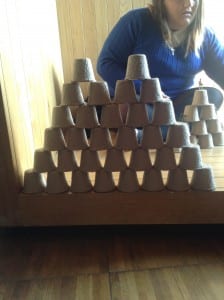
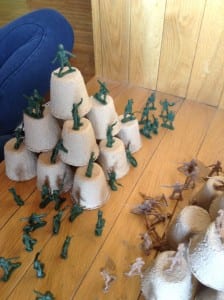
We had found a space in the collection where the architectural layout was quite unique. All that was in this space was an LCD screen with speakers and a video which was played on a loop. We liked the fact that this space wasn’t filled with lots of art and things which could draw the public’s attention away from what we were doing. However, at the same time, this space was partially concealed because of its contrast with the space around it which was filled with lots of contemporary art work. We began using these objects we had bought to see how we could fill this empty space and start concealing the large window. The cardboard cups were probably the most useful in this experimentation considering we were trying to build up a wall out of these objects and they were very sturdy. However we found the objects we were using were to small considering it was a fairly large space that we wanted to eventually conceal. We realised it would take a very long time to build this up and the chances of it falling down as we constructed it, were very high.
Conversely, this experimentation helped us to begin narrowing down the main concept we wanted to begin exploring and working with; the idea of reconstruction and deconstruction.
Word count: 282
Monday 18th February
Filling the Space
We wanted to explore how other site specific performers approached performances in a gallery, to further our understanding of effectively filling the space. Kay suggests;
‘In mimicking the gallery’s claim to neutrality and denial of content, the plywood box defers the viewer’s attention toward the dynamic operating between herself, the object and the ‘empty space’ of the gallery, subverting rather than confirming the gallery’s late-modernist aesthetic and ideology.’(2000, p.27)
I found this quote very relevant to the space we had chosen because it was a very neutral space and there was only one piece of artwork in there so it was quite minimalist.
This week we wanted to go back to experimentation with space and the different ways we could fill spaces within the gallery, particularly The Collection as we had now decided this is definitely where we wanted out site specific performance to be. Our interests this week fell back to the use of architectural space rather than any art work itself. We felt as though the gallery itself, in some places, was a work of art. We found another concealed space which led to the toilets in the gallery. There were spotlights along the side of the stairs leading right to the bottom. This was quite thought-provoking purely because it seemed as if we were being led to something which we had to discover ourselves. We started to think there were a lot more things concealed within the gallery than were initially apparent. We really wanted to divert our attention solely to this; spaces that weren’t filled, spaces we could manipulate ourselves.
The stairs were quite long and curved round, two of the group members stood at the top of the stairs with the marbles whilst the other two stood at the very bottom catching and recording the process. This process involved dropping the marbles one at a time down the stairs, although this sounds like a simple experiment (which it was), we found the echo that was created as the marbles bounced of the stairs individually to the bottom of the staircase was a response to the surrounding space.
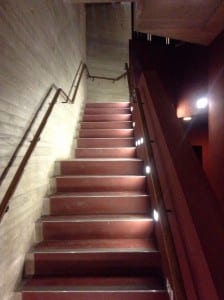
‘Place as ‘a portion of land/town/cityscape seen from the inside..entwined with personal memory, known or unknown histories, marks made in the land that provoke and evoke. (Lippard, 1997, p.7).
This is is a very significant quote in emphasizing this idea of personal memory and for us, the forgotten space. I really liked the idea of looking at the space not just as it stands with regards to the gallery but what it represents and this idea of the unknown and memories felt like something interesting to incorporate within our piece.
Word count:442
Tuesday 26th February
Trial and Error
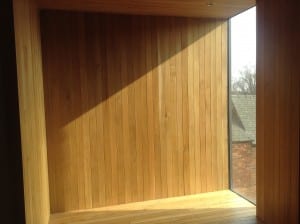
This week we moved back to the space which we had originally used for our main practical experimentation. As I had previously stated we needed to move onto a larger scale in order to successfully and effectively fill the space, as a result of this we had decided to use cardboard boxes to fill the space near the window. When we initially used the boxes there was no technique or consideration as to whether or not it was aesthetically pleasing to the eye, we quite literally built up the boxes in the space, forming a basic wall, which concealed the space behind it. At this point we had begun to really absorb the digital artwork from the LCD screen; this artwork was a really serious piece and it explored life, death and how in certain cultures dead babies were so carelessly disposed of. Personally I felt this was actually the most emotionally challenging piece of art that I had witnessed in the gallery, partly because this was something that was and is still happening in the world. What linked this piece of art to what we were experimenting with was the use of cardboard boxes; these babies were buried in the cheapest and most inhumane way possible. Even though the link between the artwork and what we were doing appeared to be a ‘happy’ coincidence, we realised that we could draw things from this art as means of inspiration to our site specific performance. The connotations of these boxes were the idea of conformity, refuse and this idea of recycling, not only in the literal sense but with regards to life and death.
As a result of this we decided that we wanted to experiment with writing on the cardboard cups to add an extra dimension to the visual aspect and understanding of our performance. What we had first written on the cardboard cups was solely inspired by the video, we had written things such as ‘baby no.1’ ‘why did this happen?’, ‘boy’ and ‘old man’. However, we quickly realised that what we wanted on the cardboard cups was actually something more relevant to what we were doing and for it to be more relevant to the space that we were occupying. The next step we needed to focus on would be exploring the concept of recycling, reusing and re-establishing.
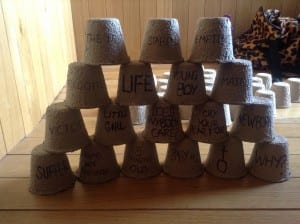
Word count:387
Monday 11th March
The Monotony of Life
Our concept has developed into linking the space within the gallery to the idea of forgotten memories and the monotony of life. The space is something which always stands in the gallery but what it represents is constantly changing. So rather than looking at the shell of the building as a gallery and how that could link to our performance we wanted to look more specifically at the interior as a space. When considering this, the monotony of life is very interesting to explore because it’s the idea of this space constantly being reused; what it is, what it was and what it could be. Of course we wanted to tie in our original concept of concealing and revealing space using cardboard boxes and this reflects how the space is ever changing and can be manipulated into something new. In addition to this, the way in which we handle the boxes (taking them from one room to another) will become a repetitive, lifeless and formal routine.
‘Cultural Geographer Yi-Fu Tuan observes that a fundamental human activity is to ‘attach meaning to and organise place and space’ (Tuan, 1977, p.5)
I found this quote very helpful because it links to the concept we had now begun exploring when drawing links to place and space. The place and the space are two very different things and as I have explained above our focus has been drawn to this.
The next stage of the experimentation was scripting a monologue;
Life reduced to refuse,
Isn’t there more than this?
The lost, forgotten, no names, no faces
Just a time, date and place
Life reduced to numbers
It started as one, then came more
Too many to count,
Nothing but a mass grave
One, two, three, four
Hair brushes,
Dollies,
Brand new frocks,
Dentist visits,
Tears,
Knee high socks.
Late night dinner,
Eavesdropping,
Being a great friend
Doing what you love,
Midnight calls,
Knowing whats around the bend.
Sight-seeing,
Grazed knees,
Crying tears of joys.
Cigarettes,
Make up sex,
The excitement of a girl or a boy.
Nameless faces,
Finding your lover,
Learning things a new.
Building foundations,
Learning from mistakes,
Being sad when it’s all through.
Office chairs,
Nail clippers,
Doing a job you hate.
Interlocking fingers,
Building blocks,
Loving someone when it’s too late.
This monologue related to ideas of the monotony and the general aspects of what most people experience in life, I read this monologue whilst the rest of the group were constructing the wall out of cardboard boxes. This process of building the cardboard boxes became more atmospheric because of the monologue being read during the construction of it. It was important to read the monologue at a very slow pace, again without reflecting any emotion using a monotone voice, because the mood we wanted to evoke from doing this was not something positive but more serious and possibly self-reflective. The group definitely found this to be quite successful particularly as we didn’t want to just have the visual aspect of us reconstructing and deconstructing the boxes, we wanted to add auditory aspect to the performance. Having multiple aspects was crucial for the performance because we wanted the audience to be in control of and have an option to choose what they wanted to take from the experience.
Word count: 478
Monday 18th March
Constructive Criticism
This week we had been asked to showcase to our fellow peers and teacher, what we had produced so far. This was just so everybody was able to see what stage in our performance we were at and whether or not we were heading in the right direction. We received some constructive criticism from our fellow peers. We were made aware of what worked and what didn’t. Firstly, projection levels from me whilst reading the monologue were very low and so our intention of adding an extra dimension to the performance consequentially failed and they found that the music we had selected for the background dominated the performance. As a result of the audience only being on one side there were certain restrictions with regards to how much they could take in from our performance as a whole. Audience members were also confused as to what relevance the writing on the boxes held to it being a site specific performance, and some felt it was too obvious and that we should take a more subtle approach to engage the audience further. As well as receiving constructive criticism, we were praised on how our performance was minimalist but created the exact effect and this positive response gave us the confidence to rectify and improve on these aspects.
Word count: 216
Tuesday 26th March
Voiceover
The members of the group and I began experimenting with the monologue and we found that it could be interesting if we performed this monologue as a group, layering up the monologue by saying it at different times and different volume levels. This linked to our main concept which we had begun exploring; building something up and breaking it back down. One of us began the monologue whilst the other three members gradually started the same monologue at different intervals, eventually we were all saying the monologue at staggered stages and by the end the layering that had initially been built up had been reduced back to one voice. The group found this extremely effective in depicting how monotonous life can be. It became really significant for us to use this concept of monotony in multiple ways with regards to our site specific performance. Thus not only did we utilise the concept of the monotony of life through the monologue, but we used the boxes to fill the space; in the same way that the gallery is temporary whereas the space in which it inhabits is permanent. Thus the construction of the boxes are almost metaphorical; filling the space to create something new, and then taking it down to reveal what it initially was.
As a group we decided it was best to record the monologue as there were only four of us in the group and having one of us occupied with the monologue meant that it only left three members for the main aspect of the performance.
Word count: 259
Monday 8th April
As the boxes were now the main part of our performance we really had to consider a lot of things regarding the way we wanted to use them and how we wanted them to look. We had had previous discussion on painting the boxes white, or having them wrapped in brown paper so they would all look in impeccable condition and so they would all look the same. We really wanted the boxes to be perfect because our performance was essentially us creating a piece of art and so the end result should be aesthetically pleasing to the eye of the public. However we had to reflect on our true intention and we decided that having the boxes in their natural state was more fitting in portraying this idea of monotony and life reduced to its natural state; stripped bare.
As we were looking at making the boxes aesthetically pleasing we considered other ways of ‘decorating’ the boxes. One of the boxes had black tape across it and we thought it actually looked quite good so we wanted to use that on all of the boxes because there was something quite stern about the way the black crosses were on each one. We had tried a range of materials out on the boxes such as chalk and paint, we found the chalk wasn’t effective at all; firstly because of how faint the colour was against the cardboard and secondly because it was a pastel colour it just wasn’t eye-catching enough. The materials we had confirmed that we would be using black tape on the boxes and paints.

As I had said earlier, what we had previously written on the boxes during our experimentation was too simple and not very relevant to what we were doing. So we had a discussion as to what would work. The theme of time was suggested as this links to the idea of the space in which the building inhabits being timeless as well as time linking to the nature and monotony of life itself. Again, as we were constantly considering how things would look to the audience we decided using roman numerals could be quite effective.
Word count: 362
Tuesday 23rd April
I Can See The Finish Line!
We were now coming to a close with our experimentation and had taken the positive and effective things from this to use within our piece. We had noticed a parallel space in the gallery room across from the one we had been working in and we really wanted to make use of the connection we felt the two spaces had. In unification with the idea of monotony, we wanted our performance to really feel like it had a routine to it. Taking the boxes from one space to another at a slow pace and with no emotion. We decided to have a run through so we could see if there was anything that wasn’t working and so we could rectify it. We noticed that everything felt quite rushed; the construction, the painting and the transportation of the boxes. Our movement became more rhythmic and structured and when we took the boxes to the parallel space we entered the room from different entrances, this change in dynamics made the performance visually more effective.
The stages of our performance would be as follows; taking the boxes one by one to construct a wall, leaving gaps in between to let the light shine through. All paint roman numerals on each of the boxes, then slowly begin to take these to the parallel space entering the room from different entrances. Place these down in a less organised way as this is showing that we had organised the boxes in one space and showing the consequence of breaking it down and disregarding it in another. Walking back to the space we had originally started the performance in and waiting until the voiceover is finished playing before opening the final box which contains for balloons we release.
Word count: 291
Saturday 4th May
Performance Day
Now our performance is over! Everything that we intended to happen in our performance happened however I think at times it was hard for the audience to keep up with us. This is because as we were constantly moving from one space to another, it is obvious that the audience didn’t know where we would end up at the end of the performance. However, I did like the attention we got from members of the public who hadn’t actually come to see our piece because it links back to one of our first experiments with regards to attaining the attention of by passers, people who had not come to see our performance but became intrigued by it.
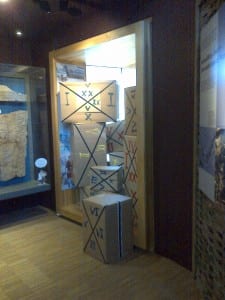
Word count: 117
Tuan, Y. (1977) Space and Place; The Perspective of Experience, London; Edward Arnold.
Lippard, L. (1997) The Lure of The Local, New York; The New Press.
Kay, Nick. (2000) Site-specific Art: Performance Place and Documentation, New York; Routledge.









